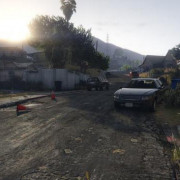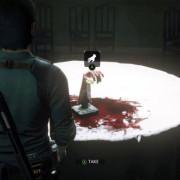Lost cities
Содержание:
- 10 Helike: The Real-Life Atlantis
- 24. Mohenjo-daro[SEE MAP]
- 3. Tikal[SEE MAP]
- 7. Tiwanaku[SEE MAP]
- Гераклион: Затонувший Египетский город
- Helike: an ancient Greek city that sank
- Gordium: King Midas’ great capital
- Trivia
- 8 Great Zimbabwe: The Medieval Castle Of Africa
- Levels
- 11. Ctesiphon[SEE MAP]
- 30. Memphis[SEE MAP]
- 7 Xanadu: The Palace Of Kublai Khan
- Palmyra was once a very wealthy merchant city
- 13. Calakmul[SEE MAP]
- Derinkuyu underground city was used until 1923
- Лептис Магна: Римский Город, Погребенный В Песке
- Unlocked Descriptions of Known Lost Cities[]
- 34. Carthage[SEE MAP]
- Дварака: Дом Кришны
- Сигирия: Восьмое Чудо Света
- 3 Heracleion: The Drowned Egyptian City
- 15. Urgench[SEE MAP]
- Hvalsey was a Viking settlement on Greenland
- The lost city of La Ciudad Perdida
- Ханаду: Дворец Хубилай-Хана
- Quotes[]
- 9 Dvaraka: The Home Of Krishna
- Vinland: where the Vikings supposedly settled in North America
10 Helike: The Real-Life Atlantis
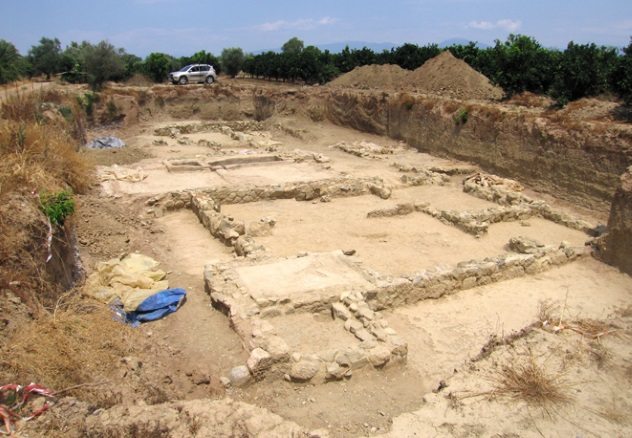
Photo credit: Drekis
Atlantis wasn’t the only mythical Greek city that sank under the water. The city of Helike met the same fate, and it shares every bit of Atlantis’s mythic power.
According to Greek myths, Helike was destroyed by the wrath of the god Poseidon. The city’s residents had driven the Ionian tribe, who were loyal worshipers of the god of the sea, out of Helike. In his fury, Poseidon pulled the whole city under the water in a single night.
Helike was destroyed in 373 BC, and for centuries, it was thought to be nothing more than parable—until it was found. In the late 1980s, two archaeologists started a quest to track it down. It took them more than a decade of work, but they found it. Over the centuries, Helike had been buried under the Earth. A mythic city was underneath their very feet.
The disaster that destroyed it, the team discovered, wasn’t exactly an act of Poseidon, but it would have felt like one. An earthquake liquefied the ground, turning the earth beneath the hapless Greeks’ feet into water as their whole city collapsed into an inland lagoon formed by the devastating tremor.
24. Mohenjo-daro[SEE MAP]
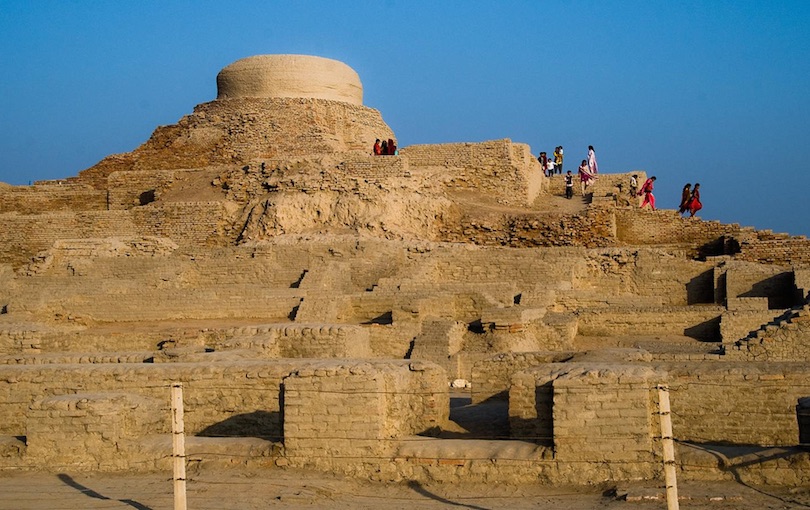
flickr/bennylin0724
Built around 2600 BC in present-day Pakistan, Mohenjo-daro was one of the early urban settlements in the world. It is sometimes referred to as “An Ancient Indus Valley Metropolis”. It has a planned layout based on a grid of streets, which were laid out in perfect patterns. At its height the city probably had around 35,000 residents. The buildings of the city were particularly advanced, with structures constructed of same-sized sun dried bricks of baked mud and burned wood. Mohenjo-daro and the Indus Valley civilization vanished without a trace from history around 1700 BC until discovered in the 1920s.
3. Tikal[SEE MAP]
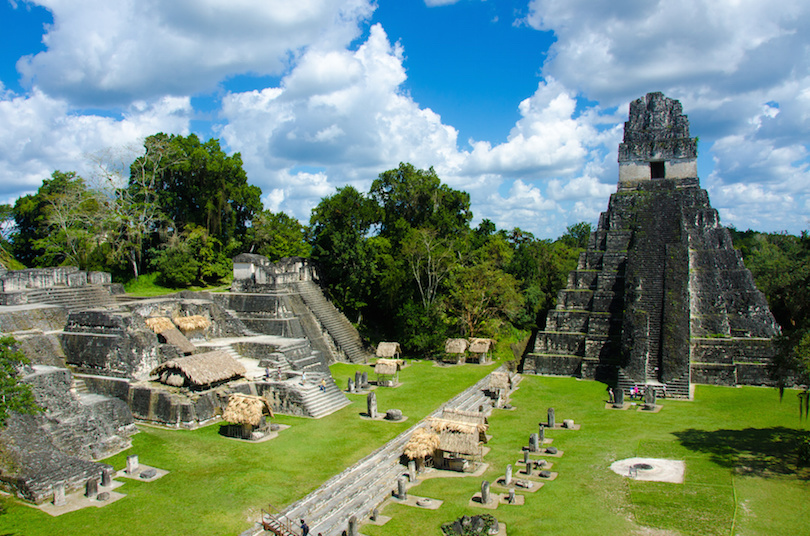
Between ca. 200 to 900 AD, Tikal was the largest Mayan city with an estimated population between 100,000 and 200,000 inhabitants. As Tikal reached peak population, the area around the city suffered deforestation and erosion followed by a rapid decline in population levels. Tikal lost the majority of its population during the period from 830 to 950 and central authority seems to have collapsed rapidly. After 950, Tikal was all but deserted, although a small population may have survived in huts among the ruins. Even these people abandoned the city in the 10th or 11th centuries and the Guatemalan rainforest claimed the ruins for the next thousand years.
7. Tiwanaku[SEE MAP]
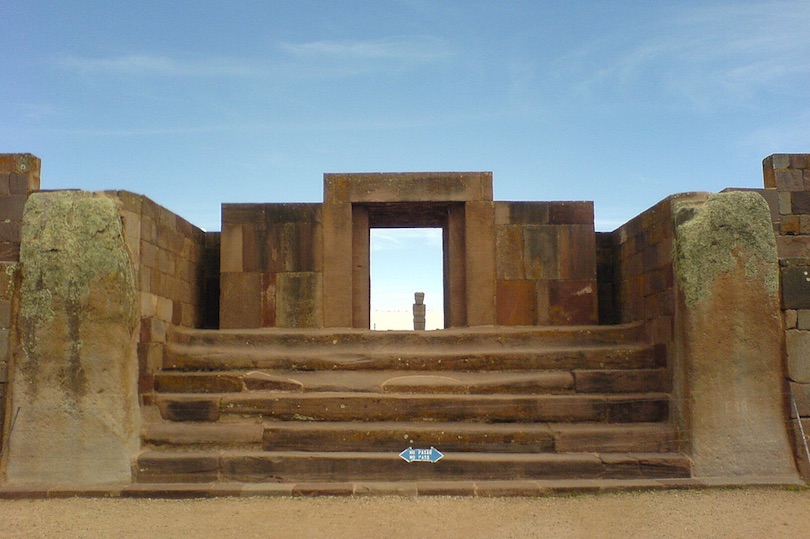
flickr/_tom_
Located near the south-eastern shore of Lake Titicaca in Bolivia, Tiwanaku is one of the most important precursors to the Inca Empire. During the time period between 300 BC and 300 AD Tiwanaku is thought to have been a moral and cosmological center to which many people made pilgrimages. The community grew to urban proportions between the 7th and 9th centuries, becoming an important regional power in the southern Andes. At its maximum extent, the city had between 15,000–30,000 inhabitants although recent satellite imaging suggest a much larger population. Around 1000 AD, after a dramatic shift in climate, Tiwanaku disappeared as food production, the empire’s source of power and authority, dried up.
Гераклион: Затонувший Египетский город
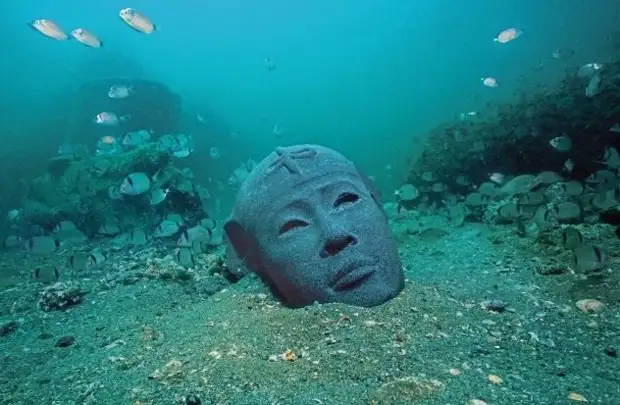
Фоторедактор: Кристоф Геригк/Франк Годдио/Фонд Хилти
Гераклион фигурировал почти в каждом греческом мифе. Это был город, где Геракл сделал свои первые шаги в Африку. Это было место, где Парис из Трои и его похищенная невеста Елена прятались от Менелая перед Троянской войной. И мы понятия не имели, где он.
Как оказалось, была причина, по которой мы не смогли найти один из самых важных портов Египта: он находился под водой. Около 2200 лет назад на Гераклион, вероятно, обрушилось землетрясение или цунами—и он утонул.
Дайверы, плававшие у берегов Египта, наткнулись на него в начале 2000-х. Они нашли странный камень под водой, и когда они подняли его, они поняли, что это был кусок древнего устава. Они нырнули обратно, чтобы посмотреть, что там еще. Вскоре они нашли полные статуи, драгоценности и даже затопленные руины древнего египетского храма.
Большая часть города все еще оставалась нетронутой. Водолазам удалось обнаружить огромные стелы, вывешенные в виде объявлений для посетителей, предупреждающих их иероглифами о египетских налоговых законах. Они нашли статуи древних египетских богов, все еще в их первоначальном виде, с рыбами, плавающими вокруг них. Это был целый затерянный город, вытащенный из глубин воды и возвращенный к жизни.
Helike: an ancient Greek city that sank

could very well be the real Atlantis. According to Greek legend, Helike was destroyed by an enraged and vengeful Poseidon for the Helikonians’ refusal to give their renowned statue of the sea god, or even a copy of it, to Ionian Greek colonists in Asia Minor (modern Turkey).
Based on accounts of ancient sources and on recent archaeology, it is believed that an earthquake in 373 BCE caused the groundbeneath the entire city to liquefy. A tsunami then engulfed the sunken city. According to ancient sources, the city disappeared in the space of just an hour or two and there were no survivors.
Helike was rediscovered in the 1980s by two archaeologists who had been searching for it for over a decade. It has since been partially excavated.
Gordium: King Midas’ great capital

, or Górdion (pronounced Gor-di-yon) in Turkish, was the capital city of the ancient Phrygian Empire. Located in Asia Minor, it is roughly 47 miles (75 km) SW of Ankara.
The city lies on what was once the ancient road between Lydia and Assyria that crossed the Sangarius River. Gordium’s most famous ruler was the quasi-legendary King Midas.
Gordium was sacked by the Cimmerians and subsequently abandoned in around 800 BCE but was rebuilt by the Persians.
Alexander the Great is said to have visited the city and solved the puzzle of the Gordian Knot, which said that whoever could loosen the knot would rule Asia — Alexander is said to have solved this problem by simply cutting the knot.
The forgotten city was rediscovered and excavated in 1900 by Gustav and Alfred Korte, and later by the Pennsylvanian Museum, between 1950 and 1973.
Trivia
- The post the construction Imps are on seems to have the head of a Snapdragon.
- EA’s official website uses «Lost City of Gold» as the name of this world.
Penny called it «The Fabled Lost City.»
-
Dr. Zomboss
This, however, contrasts the zombies’ looks.
talks normally in this world, hinting that this world is set near the present day.
- The music for Lost City’s Ultimate Battle theme uses the beginning of the Wild West Ultimate Battle theme and has some of the Ancient Egypt and Frostbite Caves
The Brainiac Maniac theme uses some of the music from the Dark Ages version in the beginning.
in the ending.
- Lost City’s Ultimate Battle and Brainiac Maniac use an orchestra and vibraphones in the beginning and end with an acoustic guitar.
- The instruments used to represent Lost City in Modern Day’s themes are the Bassoon and the Cattle Drums.
- A level with the same name and the same theme exists in the 1996 game Crash Bandicoot.
- This world is similar to Merlock’s Temple from the Disney Game Donald Duck: Goin’ Quackers.
- The music that plays on basic levels contains a few areas of silence compared to other worlds’ main themes.
- An area in Zuma’s Revenge!, another PopCap game, is also called Lost City.
- In the Epic Quest Aloe, Salut! and the Beghouled Beyond event, a night version of Lost City is present.
- Before the 5.2.1 update, there was a portal underneath the Gargantuar and Zomboss podiums.
- Before the 5.3.1 version, it was the eighth world on the world map order.
- This is the third world that has beneficial gimmicks, with the first being Wild West, and the second being Far Future.
- At the bottom left corner of the lawn, one can see a statue of Crazy Dave’s head.
- This world has exclusive boss fight music for phase 1. It is where Lost City’s instruments take part with the existing regular Zomboss battle theme.
- Frostbite Caves, Lost City, Modern Day, and Jurassic Marsh are the only worlds that don’t have unlockable plants from Plants vs. Zombies.
- In this world, there are no Last Stand levels.
8 Great Zimbabwe: The Medieval Castle Of Africa
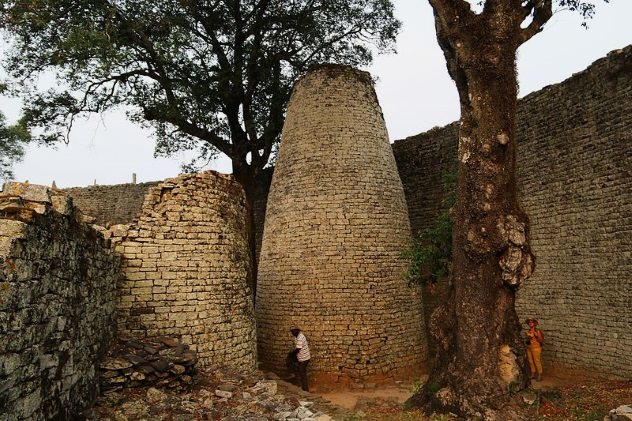
Photo credit: Yves Picq
In the early 16th century, Portuguese explorers started reporting that they’d heard legends about a castle in Africa. In the land today known as Zimbabwe, the natives told them, was a stone fortress that towered over the trees. The locals called it “Symbaoe,” and even they didn’t know who had built it.
One explorer wrote home, “When, and by whom, these edifices were raised, as the people of the land are ignorant of the art of writing, there is no record, but they say they are the work of the devil, for in comparison with their power and knowledge it does not seem possible to them that they should be the work of man.”
For centuries, Europeans thought Symbaoe was just a superstitious story. Then, in the 19th century, they actually found it. There, in Zimbabwe, was a massive castle with stone walls more than 11 meters (36 ft) tall.
The castle was made in AD 900 by an African civilization that has been lost to time—but they were incredibly connected. Inside the fortress, relics were found from all around the world, likely gathered by trading with other countries. There were Arab coins, Persian pottery, and even relics from the Chinese Ming dynasty.
Great Zimbabwe is more than just a castle. It’s proof that a lost African civilization, forgotten to history, had trade routes that connected all the way to China.
Levels
Difficulty
Lost City is a medium world. It contains twelve somewhat hard-hard days (, , , , , , , , , , and ), and one very hard day (). However, there are many easy and medium levels. It has the same difficulty as the previous world, Frostbite Caves.
- Easiest level: Lost City — Day 1 or Lost City — Day 22
- Hardest level: Lost City — Day 30
Main levels
| Day | Plants | Zombies | Flags | First reward | Notes | |
|---|---|---|---|---|---|---|
| Chosen | Available | |||||
| Choice | N/A | One | ||||
| Choice | Three | Two | A money bag | |||
| N/A | Three | A money bag | Special Delivery level | |||
| Choice | One | Two | Mystery Gift Box | |||
| N/A | Three | A money bag | Special Delivery level | |||
| Choice | N/A | Three | ||||
| Choice | N/A | Three | A money bag | |||
| N/A | Two | Mystery Gift Box | Objective: Don’t let the zombies trample the flowersLocked and Loaded level | |||
| N/A | Three | A money bag | Special Delivery level | |||
| Choice | N/A | Three | ||||
| Choice | N/A | Three | A money bag | |||
| Choice | N/A | Three | Mystery Gift Box | Objective: Produce at least 5000 sun | ||
| N/A | Three | A money bag | Special Delivery level | |||
| N/A | Three | Mystery Gift Box | Locked and Loaded level | |||
| Choice | Two endangered | Three | A note | Save Our Seeds level | ||
| N/A | Three | A Mystery Gift Box | Gargantuar battle | |||
| Choice | N/A | Three | Mystery Gift Box | |||
| One | Two | A money bag | Special Delivery level | |||
| Choice | N/A | Two | ||||
| Choice | N/A | Two | Temple of Bloom | |||
| N/A | Two | A money bag | Locked and Loaded level | |||
| N/A | One (two in game) | A money bag | Locked and Loaded level | |||
| Choice | N/A | Three | Mystery Gift Box | |||
| Choice | N/A | Two | A money bag | Objective: Don’t let the zombies trample the flowers | ||
| Choice | N/A | Two | A money bag | Objective: Survive the zombie attack withmost plants picked for you | ||
| Choice | N/A | Two | ||||
| Choice | N/A | Three | A money bag | |||
| N/A | Two (three in-game) | Mystery Gift Box | Locked and Loaded level | |||
| Choice | N/A | Three | A money bag | |||
| Choice | N/A | Two | Mystery Gift Box | Objective: Survive without planting on Dave’s mold colonies | ||
| N/A | Two | A money bag | Locked and Loaded level | |||
| N/A | None | Lost City Trophy, Far Future key | Zomboss battle |
Special Delivery
- Main article: Special Delivery
Special Delivery is a Brain Buster that is a conveyor-belt level with the plants given via said conveyor-belt. Being a conveyor-belt level, no sun and sun-producing plants will be given. Starting from Big Wave Beach, most of its levels are featuring new plants.
It is playable on Days , , , and .
Save Our Seeds
- Main article: Save Our Seeds
In the Save Our Seeds levels, the player has to protect the endangered plants marked by a striped tile and his or her house too. If the player lets one of them be eaten by the zombies or disappear in some way, he or she will lose. Otherwise, it is a regular level, which the player can choose the plants to protect the endangered ones.
It is playable on Day , with two endangered A.K.E.E.s. This has the least amount of levels of its type in the world.
Locked and Loaded
- Main article: Locked and Loaded
Locked and Loaded is a regular Brain Buster with the plants chosen, and the player has to use them to defeat the zombies. Starting from Dark Ages, its levels will always feature a premium plant.
It is playable on Days , , , , and .
11. Ctesiphon[SEE MAP]
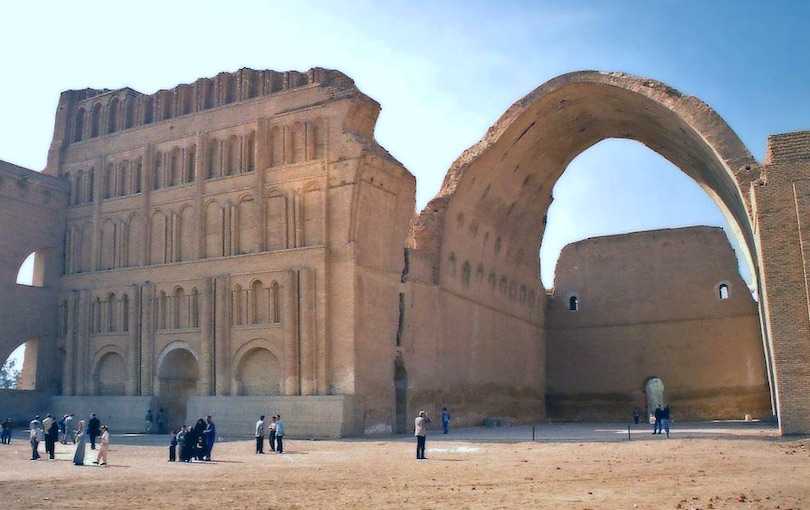
flickr/Nick Maroulis
In the 6th century Ctesiphon was one of the largest city in the world and one of the great cities of ancient Mesopotamia. Because of its importance, Ctesiphon was a major military objective for the Roman Empire and was captured by Rome, and later the Byzantine Empire, five times. The city fell to the Muslims during the Islamic conquest of Persia in 637. After the founding of the Abbasid capital at Baghdad in the 8th century the city went into a rapid decline and soon became a ghost town. Ctesiphon is believed to be the basis for the city of Isbanir in the Thousand and One Nights. Located in Iraq, the only visible remain today is the great arch Taq-i Kisra.
30. Memphis[SEE MAP]

flickr/IDS.photos
Memphis, founded around 3,100 BC, is the legendary city of Menes, the King who united Upper and Lower Egypt. Early on, Memphis was more likely a fortress from which Menes controlled the land and water routes between Upper Egypt and the Delta. By the Third Dynasty, Saqqara had become a sizable city. It fell successively to Nubia, Assyria, Persia, and Macedonia under Alexander the Great. Its importance as a religious centre was undermined by the rise of Christianity and then of Islam. It was abandoned after the Muslim conquest of Egypt in 640 AD. Its ruins include the great temple of Ptah, royal palaces, and a colossal statue of Rameses II. Nearby are the pyramids of Saqqara.
7 Xanadu: The Palace Of Kublai Khan
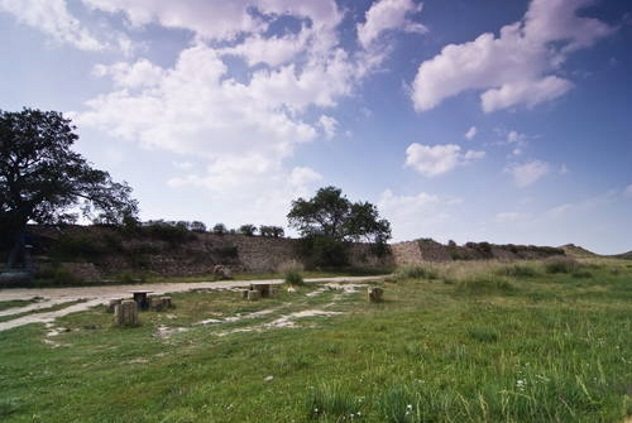
Photo credit: Zhenglan Qi Administration of Cultural Heritage of the site of Xanadu City
Marco Polo came back from China with some incredible descriptions of Kublai Khan’s empire. The most incredible of all, though, was Xanadu, the palace of the great khan.
Xanadu, Marco Polo said, was a marble palace surrounded by a massive, 26-kilometer-wide (16 mi) park filled with fountains, rivers, and wild animals. There, the khan kept 10,000 pure white horses in a golden palace guarded by dragons. It was, in short, a paradise unlike any on Earth.
The palace was destroyed by the Ming army in 1369, long before most Europeans got the chance to see it. As the centuries passed by, it slipped into legend. It was a place poets wrote about but was little more than the stuff of imagination.
Since then, though, the site of Kublai Khan’s palace has been uncovered, and we’ve found that Marco Polo wasn’t exaggerating. The khan’s home was twice as big as the White House, surrounded by a massive park that seems to have once held a wild menagerie of animals from around the world.
There are ramps for horses in every part of it, and it even has the dragons Marco Polo described. They’re statues sitting atop of pillars that have been painted yellow—but they’re posed exactly as he said they were.
Palmyra was once a very wealthy merchant city

or «City of Palm Trees» used to be an influential and wealthy city located in present-day Syria. Some archaeological finds suggest it may have Neolithic origins, but it was first mentioned in the 2nd century BC.
It was eventually conquered by various external powers, including the Romans in the 1st century AD.
The Palmyrenes were renowned and successful merchants who established colonies all along the silk road. After a brief rebellion, the city was leveled by Emperor Aurelian and partially rebuilt by Diocletian.
It was later captured by Muslim Arab invaders in 634 AD and declined under Ottoman Rule to the point of virtual abandonment. The historic city was later rediscovered as an archaeological site by European travelers in the 17th century.
13. Calakmul[SEE MAP]
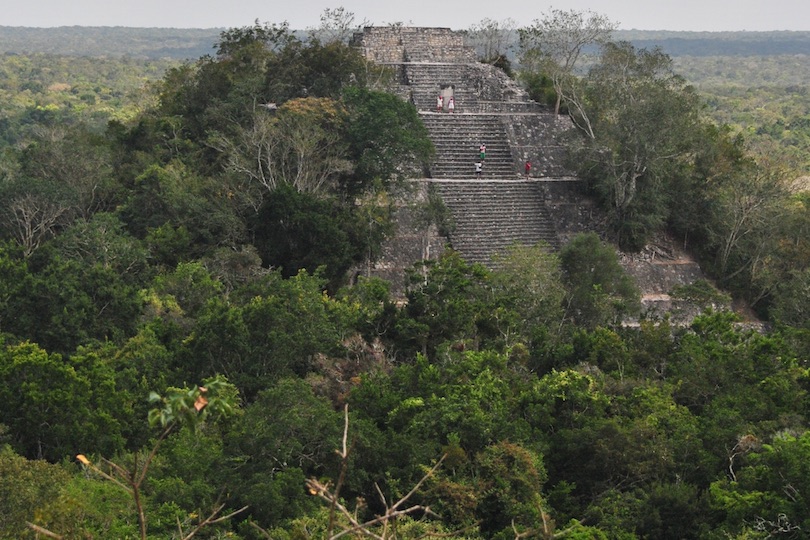
flickr/Ed Clayton
Hidden inside the jungles of the Mexican state of Campeche, Calakmul is one of the largest Maya cities ever uncovered. Calakmul was a powerful city that challenged the supremacy of Tikal and engaged in a strategy of surrounding it with its own network of allies. From the second half of the 6th century AD through to the late 7th century Calakmul gained the upper hand although it failed to extinguish Tikal’s power completely and Tikal was able to turn the tables on its great rival in a decisive battle that took place in 695 AD. Eventually both cities succumbed to the spreading Maya collapse.
Derinkuyu underground city was used until 1923

an ancient multi-leveled underground city beneath the present-day Dernikuyu City in Turkey. The entire complex extends to a depth of around 197 feet (60 meters) and is thought to have housed around 20,000 people at its height.
It would have been a fully functional city with livestock and food stores and is the largest underground excavation in Turkey. It is one of several similar complexes across Cappadocia with some being connected together by miles of tunnels.
Derinkuyu was carved by hand into the relatively soft, sandy, volcanic rock of the region. The ‘city’ thrived throughout the Byzantine era and was used as protection by Christians from assailing Muslim Arabs during the Arab-Byzantine wars.
This strategy proved successful and they were used again during the Mongolian incursions of the 14th Century. When the Ottomans seized the area, the city was used on and off by locals fleeing from Ottoman reign right up to 1923.
After this time, the complex was largely forgotten until its rediscovery in 1963.
Лептис Магна: Римский Город, Погребенный В Песке
 Огромный римский город в Ливии, который когда-то был крупным торговым центром империи, был погребен под песчаной бурей.
Огромный римский город в Ливии, который когда-то был крупным торговым центром империи, был погребен под песчаной бурей.
Город называется Лептис-Магна, и именно в нем родился римский император Септимий Север. Он превратил его в гигантский город и одну из самых важных частей своей империи, но когда Рим начал падать, Лептис Магна пал вместе с ним. Он был разграблен налетчиками, разрушен арабскими захватчиками, оставлен в руинах и полностью забыт, пока не был погребен под дрейфующими песками.
Лептис Магна провел около 1200 лет, погребенный под песчаными дюнами, пока археологи 19-го века не нашли его. Погребенный под песком город сохранился почти идеально. Они не просто нашли там несколько разбитых горшков; им пришлось раскопать и пройти через целый древнеримский город.
В Лептис Магна до сих пор сохранились амфитеатр, бани, базилика и цирк-все это настолько невероятно сохранилось благодаря песку, что выглядит почти так же, как и в дни расцвета города. Это как шагнуть в машину времени. Это потерянный, забытый город—и потому, что он был забыт, он никогда не должен был измениться.
Unlocked Descriptions of Known Lost Cities[]
Splendor Plains: Elwin’s residence is just as bright and bold as his fashion sense, and every pane of his widowed walls is set with a different color of glass. But the architecture is also surprisingly sleek and modern, with a flat roof and lots of sharp angles. And while the décor is some what sparse there are plenty of «Elwin» touches-like the room holding his stuffed animal collection and the tunnels visible under the glass floor, which allow his pet banshee(Bullhorn) to scurry wherever his little heart desires. The house is bordered by forest on one side and ocean on the other, providing Foxfire’s resident physician with a variety of peaceful views to enjoy after stressful days in the Healing Center (most of which involve complicated injuries suffered by Sophie Foster).
Wanderling Woods: As the Lost Cities’ only graveyard, the Wanderling Woods is a place of peaceful silence, filled with carefully arranged, incredibly special trees. Wanderlings are planted with the DNA of someone deceased in order to grow with hints of their physical attributes. As a result, no two Wanderlings are alike, and each is labeled with a sign to indicate the life being memorialized- though there are three Wanderlings that were planted prematurely: Sophie Foster’s, Dex Dizznee’s, and Alden Vacker’s. Only elves may enter the Wanderling Woods (unless special permission is granted by the Council), and a golden sign arches over the entrance reminding visitors that «those who wander are not lost.» And while some might comment on how few trees grow in the woods-and claim it as proof that death is rare in the Lost Cities-those mourning loved ones would likely argue that there are still far too many Wanderlings.
34. Carthage[SEE MAP]
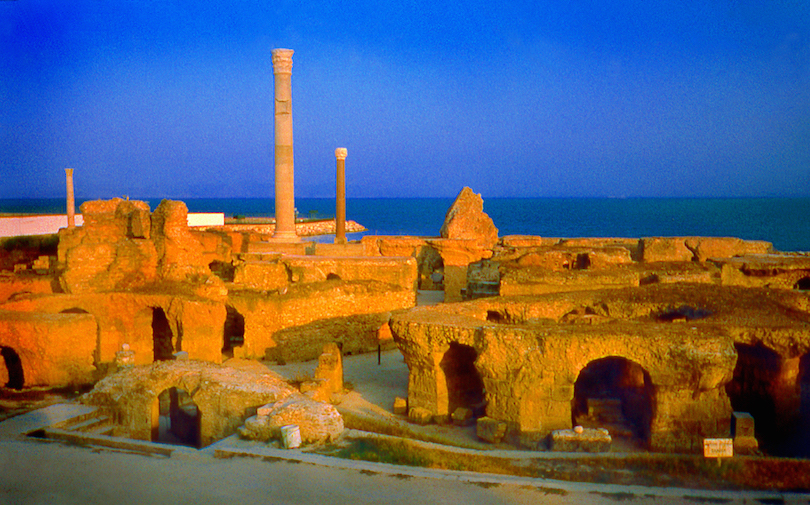
flickr/mutbka
Located in present-day Tunisia, Carthage was founded by Phoenician colonists and became a major power in the Mediterranean. The resulting rivalry with Syracuse and Rome was accompanied by several wars with respective invasions of each other’s homeland, most notable the invasion of Italy by Hannibal. The city was destroyed by the Romans in 146 BC. The Romans went from house to house, capturing, raping and enslaving the people before setting Carthage ablaze. However, the Romans re-founded Carthage, which became one of the Empire’s largest and most important city. It remained an important city until it was destroyed a second time in 698 AD during the Muslim conquest.
Дварака: Дом Кришны

Фото: Go UNESCO
Для индуса Дварака (иногда пишется Дварка) священна настолько, насколько может быть священным город. Это древний дом Кришны, верховной личности Бога-Главы, который жил на Земле 5000 лет назад.
Дварака была построена архитектором богов по приказу самого Кришны, который потребовал построить город из хрусталя, серебра и изумрудов. Он также потребовал, чтобы для его 16 108 королев было построено 16 108 дворцов. В конце концов город был разрушен в массовом сражении между Кришной и царем Сальвой, который уничтожил его взрывами энергии.
Все это звучит как последнее, что можно было бы ожидать, чтобы в этом была какая—то правда, но когда археологи начали исследовать море, где, как предполагалось, была Дварака, они действительно нашли руины города, которые соответствовали описанию. В нем не было 16 108 серебряных дворцов, но это был крупный древний город с такой же планировкой, а все остальное подходило лишь для небольшого украшения.
Есть основания полагать, что настоящая Дварака была построена 9000 лет назад, что делает ее одним из древнейших городов на Земле. В свое время это был один из самых оживленных морских портов в мире. Затем, во втором тысячелетии до нашей эры, он рухнул в воду, как и в легенде.
Сигирия: Восьмое Чудо Света
 В Шри-Ланке в пятом веке нашей эры царь Кассапа построил свой дворец на вершине валуна высотой 200 метров (650 футов). Согласно легендам, это был один из самых невероятных замков в мире. Чтобы попасть внутрь, нужно было подняться по большой лестнице, которая проходила через пасть массивного кирпично-гипсового льва.
В Шри-Ланке в пятом веке нашей эры царь Кассапа построил свой дворец на вершине валуна высотой 200 метров (650 футов). Согласно легендам, это был один из самых невероятных замков в мире. Чтобы попасть внутрь, нужно было подняться по большой лестнице, которая проходила через пасть массивного кирпично-гипсового льва.
Кассапа недолго прожил в своем замке. Вскоре после того, как он был завершен, его брат Могаллана напал. Армия Кассапы покинула его, испугавшись за свою жизнь, а его жены спрыгнули с валуна навстречу смерти. Сигирия была завоевана и оставлена как памятник царскому избытку. На какое-то время он стал форпостом, а затем буддийским монастырем, но вскоре о нем забыли.
Однако когда европейские археологи начали исследовать эту историю, они обнаружили, что замок был настоящим. Там действительно был огромный лев, охраняющий лестницу, и действительно нужно было пройти через его пасть, чтобы попасть внутрь.
Внутри все еще более невероятно, чем рассказывают легенды. В одной части есть сверкающий белый парапет, который работает как зеркало, позволяя раздутому королю смотреть на свое отражение, когда он идет по своему дворцу.
ЮНЕСКО объявила Сигирию восьмым чудом света, и сегодня она является популярным туристическим направлением. Но долгое время это были не более чем забытые руины свергнутого тирана.
3 Heracleion: The Drowned Egyptian City
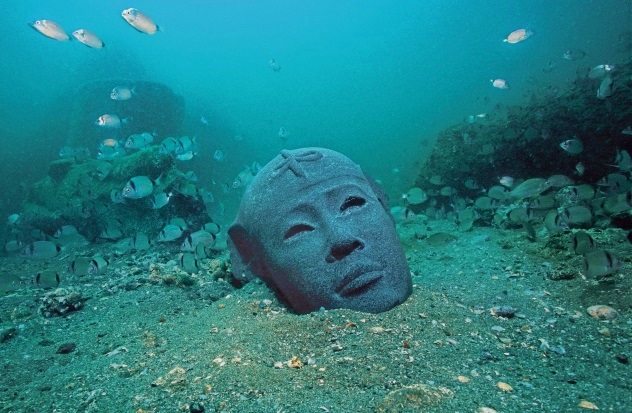
Photo credit: Christoph Gerigk/Franck Goddio/Hilti Foundation
Heracleion showed up in almost every Greek myth. It was the city where Heracles took his first steps into Africa. It was the place where Paris of Troy and his stolen bride Helen hid from Menelaus before the Trojan War. And we had no idea where it was.
As it turned out, there was a reason we couldn’t find one of Egypt’s most important ports: It was underwater. About 2,200 years ago, Heracleion was likely hit by an earthquake or a tsunami—and it drowned.
Divers swimming off the coast of Egypt stumbled upon it in the early 2000s. They found a strange rock under the water, and when they brought it up, they realized that it was a piece of an ancient statute. They dove back in to see what else was there. Soon, they’d found full statues, jewels, and even the drowned ruins of an ancient Egyptian temple.
A massive part of the city was still intact. Divers were able to find huge steles put up as notices to visitors, warning them, in hieroglyphics, of Egyptian tax laws. They found statues of ancient Egyptian gods, still in their original form, with fish swimming around them. It was an entire lost city, pulled from the depths of the water and brought back to life.
15. Urgench[SEE MAP]

flickr/martijn.munneke
Formerly situated on the Amu-Darya River in Uzbekistan, Ürgenç or Urgench was one of the greatest cities on the Silk Road. The 12th and early 13th centuries were the golden age of Ürgenç, as it became the capital of the Central Asian empire of Khwarezm. In 1221, Genghis Khan razed Urgench to the ground. Young women and children were given to the Mongol soldiers as slaves, and the rest of the population was massacred. The city was revived after Genghis’s destruction but the sudden change of Amu-Darya’s course to the north forced the inhabitants to leave the site forever.
Hvalsey was a Viking settlement on Greenland

, aka ‘Whale Island’, is a long-lost Viking settlement located near Qaqortoq, Greenland. It is, to date, the largest and best-preserved example of Norse ruins in what is known as the Eastern Settlement.
It was settled around 1000 AD by Norse farmers who were thought to have arrived from Iceland. The site was probably home to about 4,000 people during its height.
The Western Settlement would be abandoned in the 14th century, with Eastern Settlement lasting a little longer before also being abandoned.
Records exist of a wedding being held in the settlement’s church in 1408. This was the last record of any habitation of the area.
The site was rediscovered in 1721 by a Danish missionary.
The lost city of La Ciudad Perdida

According to legend, around 1,300 years ago, a people called the Tairona were commanded by their gods to found the city of along a mountaintop in the Sierra Nevada de Santa Marta.
They would occupy the area for almost a millennia before the Spanish arrived in Columbia. Although the two civilizations never met face to face, the Tairona were wiped out by the diseases carried by the conquistadors.
Abandoned for hundreds of years, the settlement was found by a group of bandits in the 1970s, who plundered any valuables and sold them on the black market. Forgotten for almost 500 years, the city is now once again back on the map.
Ханаду: Дворец Хубилай-Хана

Фото: Zhenglan Qi Administration of Cultural Heritage of the site of Xanadu City
Марко Поло вернулся из Китая с невероятными описаниями империи Хубилай-хана. Но самым невероятным был Ксанаду, дворец великого хана.
Ксанаду, по словам Марко Поло, был мраморным дворцом, окруженным массивным парком шириной 26 километров (16 миль), наполненным фонтанами, реками и дикими животными. Там хан держал 10 000 чистых белых лошадей в золотом дворце, охраняемом драконами. Короче говоря, это был рай, не похожий ни на один другой на Земле.
Дворец был разрушен армией Мин в 1369 году, задолго до того, как большинство европейцев получили возможность увидеть его. По мере того, как проходили века, он превращался в легенду. Это было место, о котором писали поэты, но оно было не более чем плодом воображения.
С тех пор, однако, место дворца Хубилай-хана было обнаружено, и мы обнаружили, что Марко Поло не преувеличивал. Дом хана был в два раза больше Белого дома, окруженный огромным парком, в котором, похоже, когда-то содержался дикий зверинец животных со всего мира.
В каждой его части есть пандусы для лошадей, и там даже есть драконы, описанные Марко Поло. Это статуи, стоящие на колоннах, выкрашенных в желтый цвет, но они поставлены точно так, как он сказал.
Quotes[]
—Narration, in Flashback
| Places | ||||
|---|---|---|---|---|
|
9 Dvaraka: The Home Of Krishna
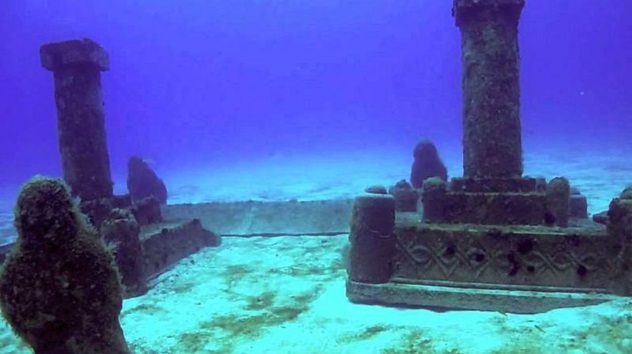
Photo credit: Go UNESCO
To a Hindu, Dvaraka (sometimes spelled Dwarka) is as sacred as a city can be. It is the ancient home of Krishna, the supreme personality of the God Head, who lived on the Earth 5,000 years ago.
Dvaraka was built by the architect of the gods under Krishna’s own orders, who demanded a city made of crystal, silver, and emeralds. He also demanded that 16,108 palaces be made for his 16,108 queens. In the end, though, the city was destroyed in a massive battle between Krishna and King Salva, who annihilated it with blasts of energy.
It all sounds like the last thing you’d expect to have any truth in it—but when archaeologists started exploring the sea where Dvaraka was supposed to have been, they actually found the ruins of a city that fit the description. It didn’t have 16,108 silver palaces, but it was a major ancient city with the same layout, and the rest fit as just a little bit of embellishment.
There’s reason to believe the real Dvaraka might have first been built 9,000 years ago, making it one of the oldest cities on Earth. At its peak, it was one of the busiest seaports in the world. Then, in the second millennium BC, it collapsed into the water, just like in the legend.
Vinland: where the Vikings supposedly settled in North America

Vinland, Winland, or Vineland was the name given to an area of North America apparently settled by Norse Vikings in around 1000 AD. Once thought to be a myth, a Viking settlement was actually found in in Newfoundland in the 1960’s.
Before this discovery, the story was widely dismissed as pure fantasy. Interestingly, the story also told of how the adventurers fought the locals, who they called Skraelingar.
These people, it was said, dressed in white clothes and lived in caves and holes. When they attacked, they carried long poles and let out terrifying battle cries. There is no evidence for this story, but it does appear that the Viking settlement at L’Anse Aux Meadows was used as a Viking encampment for a short time, perhaps as a base for further exploration or to gather supplies.

